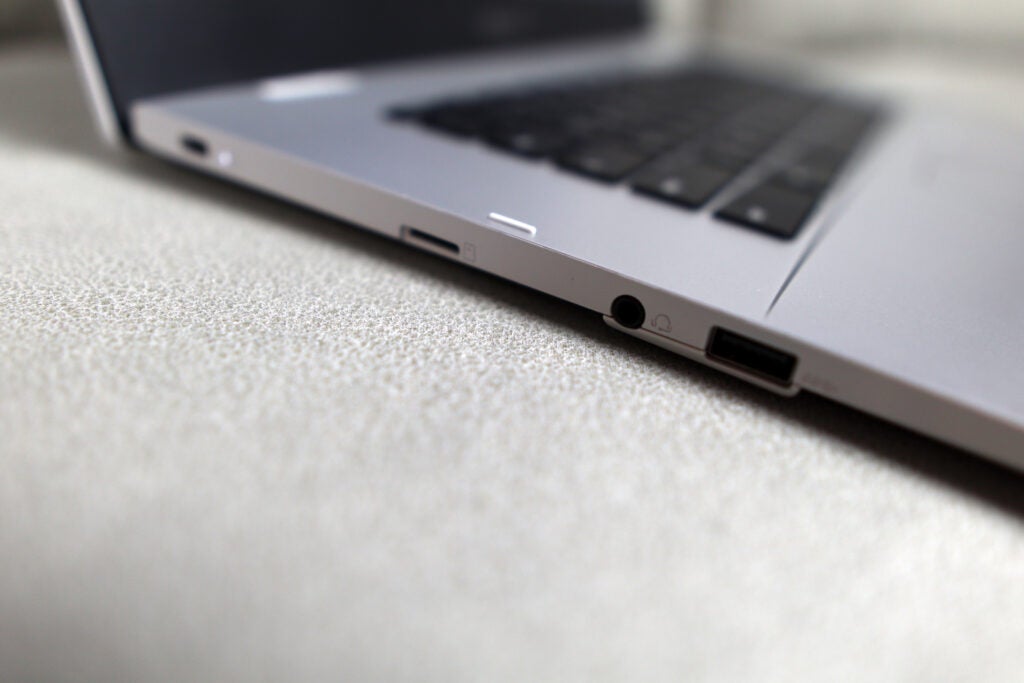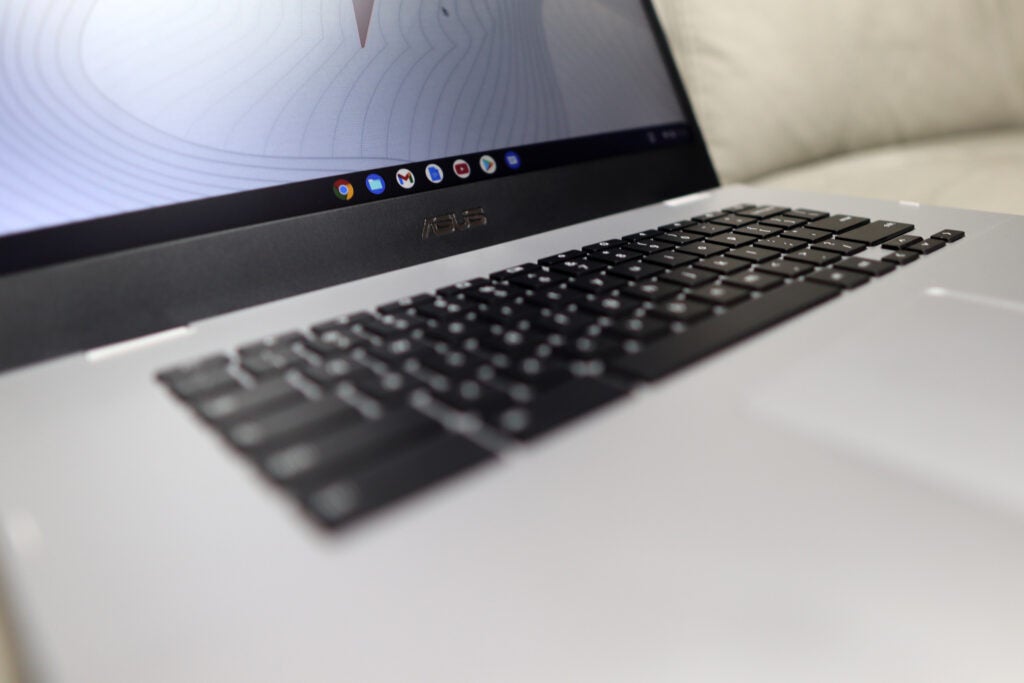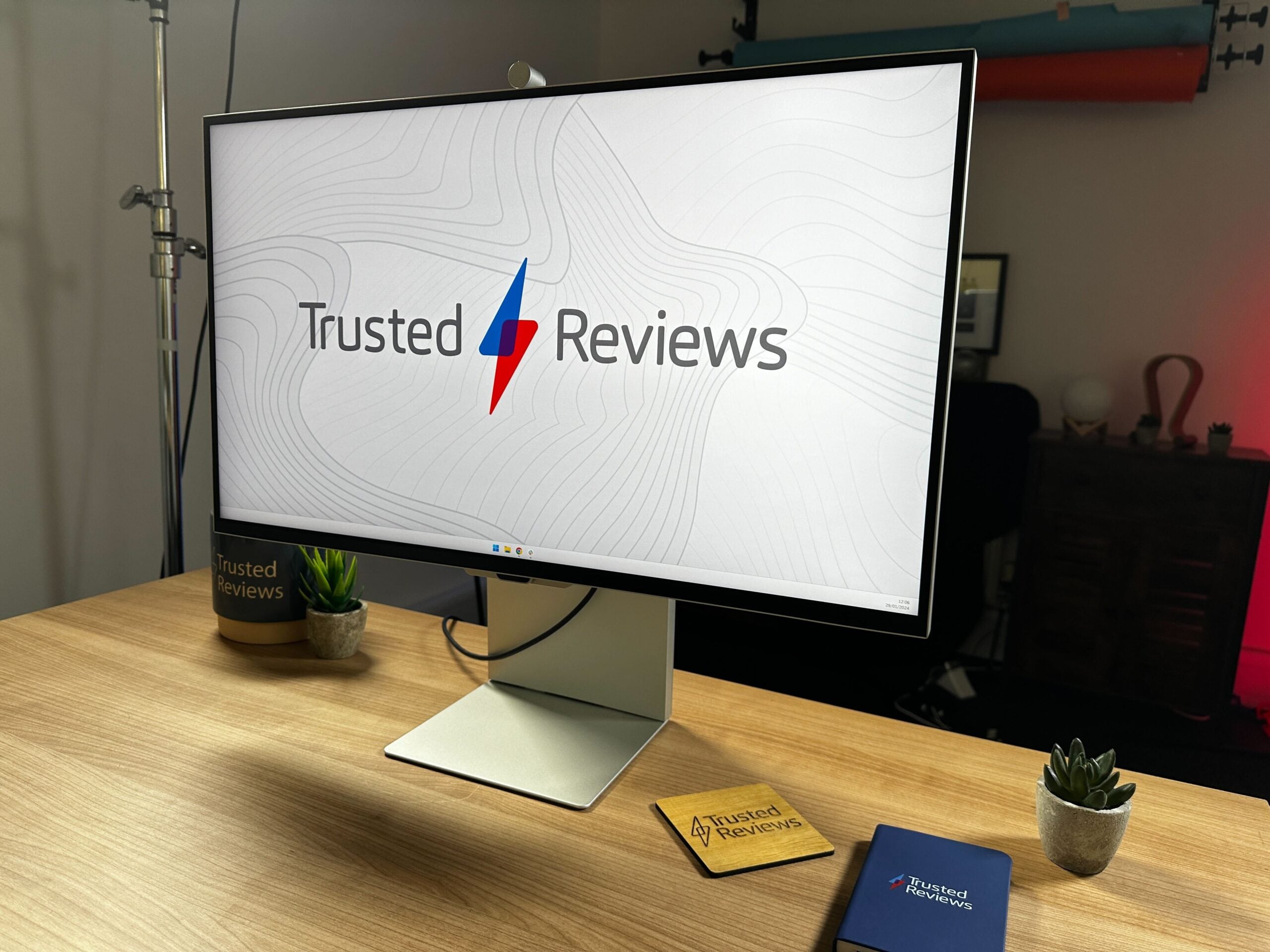Asus Chromebook CX1 Review
A Chromebook with a budget-friendly price

Verdict
The Asus Chromebook CX1 is an okay Chromebook designed for casual users. It offers up a 15.6-inch display with passable brightness, alongside a relatively tactile keyboard and a pretty average port selection. If you’re on a budget and after a large-screen Chromebook, then this is a decent option. Otherwise, its generic design and small trackpad aren’t going to be turning many heads anytime soon.
Pros
- Somewhat sturdy build quality
- Relatively tactile keyboard
- Average port selection
Cons
- Sluggish performance
- Generic design
- Small trackpad
Availability
- UKRRP: £279.99
Key Features
- Handy few ports available:The Chromebook CX1 offers up a basic set of ports with a couple of USB-As and USB-Cs.
- Affordable price:One of the biggest points about the Chromebook CX1 is its cheap RRP, making it a good pick for students.
- Decent battery life:The CX1 will also last for just shy of 10 hours, offering up some decent battery life
Introduction
Chromebooks have always been the bastion of budget computing, and Asus’ large-screen candidate – the CX1 – aims to sustain that trend.
This is clear the moment you look at its spec sheet, which offers up an Intel Celeron N3350 processor alongside 32GB of eMMC storage and 4GB of RAM. These are very entry-level specs, even by Chromebook standards.
At a price of £279.99, it’s certainly an affordable entry into the world of Chromebooks, and can have a more attractive price tag if you opt for either the 14 inch model or the positively tiny 11.6 inch option. But is it worth it? I’ve put it to the test to find out.
Design and keyboard
- Generic silver shell looks and feels okay
- Relatively tactile keyboard, albeit with a compact layout
- Trackpad is on the smaller side
The Asus Chromebook CX1 isn’t going to turn many heads with its design or build quality. While its silver colouring and smooth finish on the top surface look fine, I can’t help but feel underwhelmed by the way the CX1 feels in hand. By contrast to other more budget Chromebooks like the Acer Chromebook 314, it just feels generic.
For a laptop with a 15.6-inch display, it feels quite hefty with a total weight of 1.8kg. This puts it on the heavier side of the market, but I found it still feels pretty portable if you do need to take it on your travels.

When it comes to connectivity, the Asus’ offering is distinctly budget. All-round, you’ll only find two USB-As and two USB-Cs, alongside a Micro-SD card slot and a headphone combo jack. Considering its size, this feels a little stingy. At the very least an HDMI port would have been welcome.
The same thing is also true once you lift up the lid of the CX1, as you’re greeted with a compact 60% keyboard layout and an awful lot of empty space. Other laptops with this chassis space will at least provide you with a number pad, which would have been welcome here.

The keyboard itself is relatively responsive and tactile, although there’s not as much of a defined travel to the individual keys which can make it feel a little flat at times.
The screen bezel on the top and bottom of the CX1’s 15.6-inch panel is noticeably thick, but Asus partially makes up for this by housing a decent quality 720p webcam, which is great if you do need to load up Teams or Zoom.

There isn’t much to speak of when it comes to the CX1’s trackpad as for the overall size of the laptop, it looks to be on the smaller side. On the plus side though, it’s accurate and the buttons are tactile enough for repeated inputs.
Display
- Low-resolution display with average colours
- Pretty dim brightness
- 15.6-inch panel offers a handy size, though
If you’re on the hunt for a budget laptop with a Full HD display, then you’re unfortunately out of luck with the Asus Chromebook CX1’s base model. It offers up a basic 1366×768 resolution, which sits just above 720p.
For a larger display like this 15.6-inch panel, a low resolution doesn’t help matters, especially since the gap between pixels is noticeable when watching videos Disney Plus or Netflix.

With a quoted brightness of just 220 nits, this isn’t the most vibrant of panels and it can be a little dim, even for day-to-day working. If you’re planning on working outside on a bright day, the Asus Chromebook CX1 may not be an ideal companion.
On a brighter note, the screen bezel on the sides are small enough to make sure the CX1 offers up a good screen to body ratio. This also meant viewing angles were pretty decent.
Performance
- Dual-core Celeron CPU offers meagre performance
- 32GB eMMC storage is pretty stingy
- ChromeOS offers a simple user experience
Given the CX1’s status as a wallet-friendly Chromebook, I had no real expectations on it to do anything but the basics well.
With that being said, even for a lower-end machine, using the CX1 was like pulling teeth sometimes, with its dual-core Intel Celeron N3350’s 1.1GHz clock speed resulting in a painfully slow real-world performance.
| Asus Chromebook CX1 (CX1500) | Samsung Galaxy Book Go | Lenovo Chromebook Duet | |
| Processor | Intel Celeron N3350 | Qualcomm Snapdragon 7c | MediaTek Helio P60T Octa-Core |
| Geekbench 5 Single Core | 269 | 525 | 263 |
| Geekbench 5 Multi Core | 522 | 1652 | 915 |
This backs up the lower scores the CX1 garnered in our CPU testing grounds of Geekbench 5 with its scores comparing well only against the Lenovo Chromebook Duet, which is essentially just a tablet. Its multi-core scores were noticeably sluggish, but this is hardly surprising given the Celeron N3350 on offer here only has two.
The CX1 also hasn’t been bestowed with much in the way of storage with this review unit packing a 32GB eMMC, a third of which is taken up by system storage. You’re probably better off picking up a large-capacity Micro SD card and using it here if you do want this Chromebook to be useful for storing lots of applications.

To get the most out of this laptop, you will have to stick to the basics with web browsing and typing out Word documents being the CX1’s forte. Those looking for a laptop for university or work will likely want something more powerful.
Battery life
- Lasted 9hrs 52 minutes in the battery test
- Capable of lasting between one and two working days
The battery life for Chromebooks is typically decent, but in the case of the CX1, it scrapes through as being pretty average.
In our video loop test, the CX1 lasted just shy of 10 hours, which means it falls behind other budget Chromebooks by two or three hours in some instances.

A ten hour battery life will last between one and two working days, dependent upon how much hypermiling you’re planning on doing.
It’s certainly not a bad battery life, but I expected better stamina given how weak the processor is here.
Latest deals
Should you buy it?
You want a large-screen Chromebook: The Chromebook CX1 is a decent choice if you’re someone who is after a large-screen Chromebook at an affordable price. Its display isn’t going to set the world alight, but is fine for casual computing.
You want snappy performance and a cool design: Where the Chromebook CX1 falls down though is on its generic silver shell and an out-of-date dual-core processor that offers up meagre performance at best. You’re better off spending a little more to get better all-round performance.
Final Thoughts
The Asus Chromebook CX1 isn’t going to set the world alight with its unremarkable design and slow real-world performance. For a ChromeOS-based laptop, it’s pretty passable with a large display that offers some rather average colours.
Otherwise, if you’re looking to try out a Chromebook, downsize your display hopes and opt for something a little more compact like the Acer Chromebook 314.
How we test
Every laptop we review goes through a series of uniform checks designed to gauge key things including build quality, performance, screen quality and battery life.
These include formal synthetic benchmarks and scripted tests, plus a series of real world checks, such as how well it runs the most frequently used apps.
We also make sure to use every laptop we review as our primary device for at least a week to ensure our review is as accurate as possible.
Used as our main laptop for the review period
Tested for at least a week
Used consistent benchmarks for fair comparisons with other laptops
Tested the battery life
FAQs
The Asus Chromebook CX1 does not feature a touch screen option.
The Asus Chromebook CX1 does not support LTE or 5G connectivity.
The Asus Chromebook CX1 does not have an HDMI port. It’s port offering is limited to two USB-A and two USB-C ports.
Full specs
Jargon buster
USB-C
The modern USB connector you’ll find on most Android phones, new laptops, cameras and games consoles. It’s reversible and used for charging along with data-transfer.HDMI
HDMI stands for High Definition Multimedia Interface and is to transmit video/audio signals from a source to a receiver.Nits
The brightness level of a display. 300 nits is regarded as the minimum target for high-end screens.








